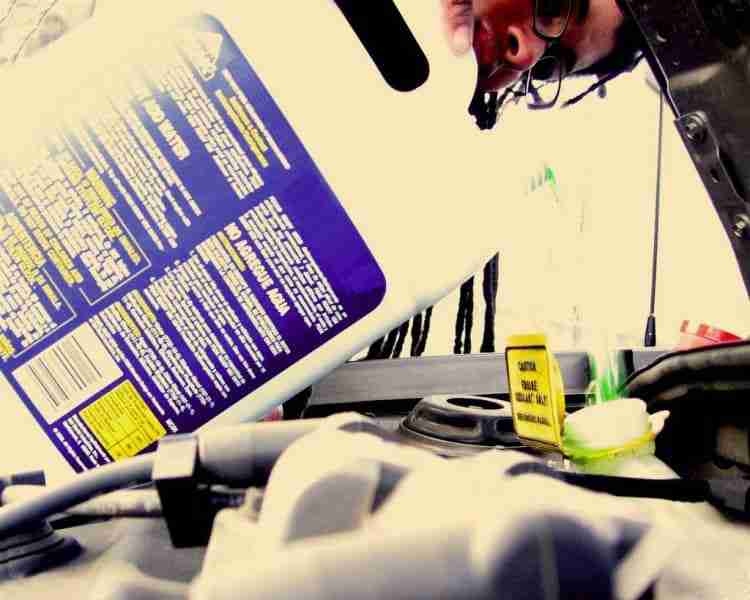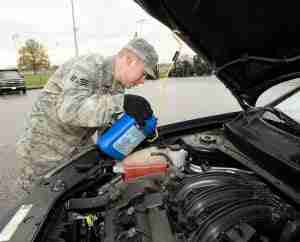How Do I Know How Much Coolant To Add To My Radiator?

Your engine’s radiator is an essential component. Without it, the car’s engine is in danger of overheating. When this happens, it can cause engine damage. At the very least, your engine will stop working until it cools down.
To prevent your engine from overheating and keeping the car’s cooling system working properly, you will need to add coolant to the radiator. However, this isn’t always as easy as it sounds. There’s more to the process than simply pouring water or antifreeze into the radiator.
How to Check Your Radiator Fluid
Before you even think about pouring coolant into the radiator, you first need to check the fluid level. Overfilling a radiator can be just as damaging as letting it run dry. There are a few simple tips that will make checking radiator fluid levels safe and easy.
- Check to see if the engine is cool.
Always let the car sit with the engine turned off for several minutes before trying to check the fluid level. A good tip is to touch the hood. If the hood is warm than the radiator is still too hot to touch. Depending on the climate, it can take several minutes to an hour for the radiator to cool down.
- Open the hood.
When the hood is cool to the touch. Go ahead and lift it. There should be a lever inside the car by the driver’s seat. Some older models have latches underneath the hood that you simply press or pull on.
Once the hood is up, make sure that you use the attached rod to properly hold it in place. You don’t want the vehicle’s hood suddenly falling on your neck or head.
- Find the radiator and its cap.
The radiator is usually located towards the front of the engine. This convenient design makes it easier for you to safely check the fluid. The cap is usually on the front of the radiator, close to or on the top.
If you’re having trouble finding the radiator or the cap, the vehicle’s owner manual should include a simple diagram of the engine block with all of the components labeled.
- Remove the radiator cap.
The first step is to grab a towel. Even if the engine block is cool, the liquid in the radiator can still be hot. There’s also the chance that steam can escape when the cap is removed. If you don’t feel any heat coming off the radiator, use the towel to carefully remove the cap.
You do not want to stand directly over the engine when you’re removing the cap in case steam has built up inside.
- Check radiator fluid levels.
Once the cap is off it’s time to check fluid levels. There should be markings on the radiator expansion tank. The markings can wear off over time but you can still estimate how high or low the coolant levels are.
Your owner’s manual should include a section on the vehicle’s radiator, along with optimal fluid levels. Often this includes a diagram of the radiator tank with fluid levels visibly marked. You can compare the diagram against your vehicle.
How to Add Radiator Fluid
 After checking the radiator fluid and discovering that it’s low, you’ll need to add coolant to keep your engine running. Before you start, there are a few things you’ll need to make the job go faster and easier.
After checking the radiator fluid and discovering that it’s low, you’ll need to add coolant to keep your engine running. Before you start, there are a few things you’ll need to make the job go faster and easier.
- Distilled water
- Coolant – antifreeze
- Gloves
- Funnel
Now that you’ve gathered the necessary supplies it’s time to fill the radiator.
- Find the radiator’s overflow tank.
The overflow tank is on the side of the radiator. It catches any overflow from the radiator. Most of these tanks move the coolant back into the radiator, making it an ideal choice to add new fluid. The fluid will move into the radiator when needed, preventing any overflows.
Sometimes the radiator has a low fluid level and the overflow tank is full. Often this indicates a problem with the coolant system and should be inspected by a certified mechanic. If you’re not sure if your overflow tank returns the fluid to the radiator, it should be stated in the owner’s manual.
- Mix the coolant with distilled water.
You want to mix the coolant with equal parts of water for the radiator to work efficiently. The funnel makes it easy to pour the liquids and the gloves will protect your hands from accidental splashes. You can use a higher concentration of water or coolant but it can put more stress on the system. Some coolants come premixed so you don’t have to do any mixing. Just read the instructions printed on the coolant label.
- Pour the coolant into the overflow tank or radiator.
The overflow tank is the preferred place to pour in the coolant, and the funnel makes this easy without spilling a drop. This also applies if you have to pour the coolant directly into the radiator. You also want to make sure you don’t go over the recommended level, When you’re done, replace the radiator cap.
- Start the vehicle’s engine.
Any time you add coolant to the radiator, it’s a good idea to start the engine. You should be listening for any usual sounds, primarily from the cooling fans. Humming or clanging noises could indicate a problem with the cooling system.
- Check for leaks.
Always check underneath the vehicle after filling the radiator. If the liquid is leaking it could indicate,
- The radiator was over-filled
- A leak or kink in a hose
Any of these can signify a more serious problem with the radiator than it simply being low on fluid. You also want to wipe up any spilled fluid. Not only is it an environmental concern, but it can also be hazardous to animals and humans.
How to Know When to Change Your Radiator Fluid
Some times your radiator fluid levels are fine but you still need to change your radiator fluid. How do you know if the coolant is dirty? There are a few signs that could indicate it’s time to change your radiator fluid.
- The coolant looks ‘milky’ or cloudy.
Some coolants are brilliant blue and others are a clear white. While the colors can differ, each one should be slightly transparent. If the coolant is cloudy or looks like it might have been mixed with milk, you’ll want to schedule a visit to your mechanic.
Often, this is a sign that oil is leaking into the cooling system and this can cause serious and expensive engine problems.
- Check for floating particles in the coolant.
Dirt and other small particles can get into the coolant. From there, enter the cooling system and eventually the engine. When tiny particles get into the engine, it can cause blockages and other problems that if ignored are often expensive to fix.
As soon as you find debris in the coolant it’s best to immediately take your vehicle to a licensed service center.
- Use a test strip.
Over time coolant can start to lose its effectiveness. Sometimes a bottle of coolant sits on a shelf for too long or the vehicle is rarely driven and requires few fluid changes. There are inexpensive test strips that you can find at most automotive parts stores.
Simply dip the test strip into the radiator and compare the color change to the included chart. If the strip shows that the fluid has lost some or most of its effectiveness, it’s time to change it before there are problems with the vehicle’s engine.
Water vs. Coolant
Since it’s recommended that you mix equal parts water and coolant, some drivers wonder why they can’t save money and leave antifreeze out of the mixture. There are a few good reasons why you shouldn’t leave coolant out of the mix.
Distilled water by itself is fine when you’re engine suddenly overheats. It’s recommended that every driver keep a gallon of distilled water in their vehicle at all times for these emergencies. While water will keep the engine cool long enough to drive to a service station it doesn’t have the protective properties associated with antifreeze.
Water boils at a different rate than coolant. Water boils at 212 F and coolant around 387 F. Since water boils at a lower temperature, there’s a chance it will evaporate leaving your radiator dry. Water also won’t protect the cooling system from corrosion, in some cases, it can add to it.
Conclusion
It’s important to keep up with your radiator fluid, it is a part of basic vehicle maintenance. This includes checking the fluid level and replacing it when necessary. Like every other component in your vehicle’s engine, there are shortcuts you can take.
However, if you want to prevent your car engine from overheating or worse developing expensive problems keep an eye on your coolant levels and don’t depend solely on periodically adding distilled water.













No Comment